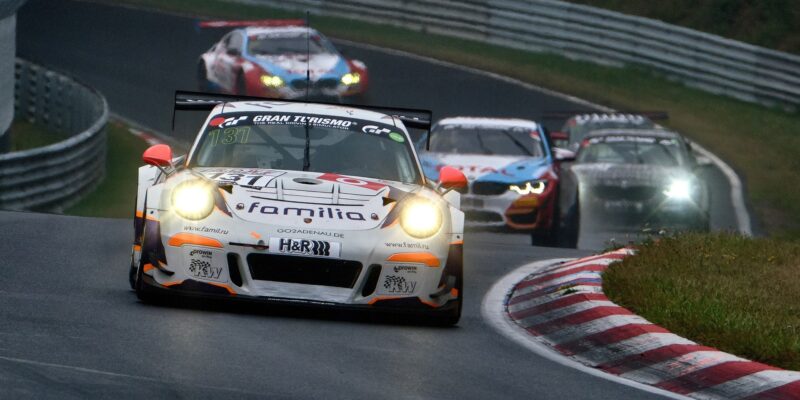“Lack of Lead Foot Need Not Apply”: A History of Germany’s Famed Nurburgring Track
What many consider the fastest and most famous racetracks in the world can actually be attempted by any driver! The Nurburgring is located in western Germany, and consists of 12.9 total miles of track and 73 turns. Anyone trying their hand(s) at this feat can also expect to adjust to nearly 1,000 miles of altitude change during the drive. It has been expertly reproduced in many simulations and is a mecca of sorts for diehard motorists.
A History of Germany’s Famed Nurburgring Track
Formula 1 champion Jackie Stewart was the one to coin the “Green Hell” nickname. This prompted us to search for more details on this revered location’s history. The story began in 1899, with the main character of James Gordon Bennet JR who was a publisher of the New York Herald. Germany had an abundance of race fans at the turn of the century, and an industry with deep roots saw its famed origins.
The emperor Kaiser Wilhelm II had the idea in 1904 that the scenic Taunus Forest would be a great location for racing. Early German motor races were held on public roads, and it became evident that a fully-fledged circuit would see success. In 1907 Wilhelm II suggested the location of the Eifel region. Here, farmers didn’t have much use for the rocky land. In 1922, the ADAC automobile club originated the Eifelrennen Series here, with massively peaked spectator interest.
A speed-beckoning star is born on Nurburgring Track:
Architect Gustav Eichler had been keen on the town of Nurburg for a brand-new raceway’s location. Over 2,000 laborers chipped in on the task of construction in 1925. One little-known fact is that the first race here in 1927 actually featured motorcycles! The original historic track boasted the 14.2-mile North Loop and the 4.8-mile South Loop. At that time, most racers had to complete a 17.6-mile circuit known as the Gesamtsrecke.
From the very beginning, this track was surprisingly constructed for public use. This allowed anyone who wished to attempt a run to do so when there was no scheduled event. Very skilled “Ringmeisters” loved to show off their talents here, but World War II saw some extreme damage to the track from tanks. In 1947, driving enthusiasts were once again able to enjoy the track when battles and destruction ceased.
High-octane intentions make for accidents:
During the 1950s and 1960s, spectators worldwide were drawn to racing in high numbers. As the introduction of Formula 1 became prevalent, there was an uptick in track-related deaths. Its multiple narrow paths were so dangerous that F1 drivers put their feet down with an eventual boycott in 1970. In 1968, racer Jim Clark met with a deadly fate when his Lotus crashed directly into a tree. It was then officially decided that many improvements needed to be made to the Nordschleife.
Extra care was taken to get rid of some bumps. Since the area was so remote, emergency vehicles had trouble accessing injured drivers. The German Grand Prix was held here in 1971. TV broadcasting professionals then expressed concern regarding how challenging it was for cameramen. The drones of today that make things easy would have been a massive help in the 70s! During the 1976 GP, Nicky Luada was severely hurt after his car was engulfed in flames during a race that he had attempted along with other to boycott.
“Big Brother is Watching”: ‘Hockenheim’s 1984 construction
The 2.8-mile GP Strecke was completed in 1984, completely replacing the hazardous albeit thrilling Sudschelife. Two tracks combined made for a 15.2-mile loop. The Nurburgring is a place that brings out the rawest yet still refined excitement about burning through corners and working happily through automatic or manual gears. It was not until 1995 that the F1 circuit would return, as the proud official host of the European Grand Prix.
After 2007, the German GP participants blasted through the Nurburgring as the setting for odd-numbered years. So many famous drivers and their fans have long enjoyed a massive appreciation for the North Loops scenery. There’s nothing quite like blasting past medieval castles on a track that has claimed over 200 lives, as the average driver struggles with its ferocity. On busier days, you’ll notice a mobile ticket barrier on the main straightaway to reduce bottlenecking at fixed barriers.
Current times at a touring enthusiast’s paradise: the ’Ring Today:
A close-up look at this exhilarating and monumental track today sees it hosting several world-class events. The ADAC 24-hour Race Nurburgring along with the World Touring Car Championship’s Race of Germany takes place on its legendary pavement. There’s a hotel along with an indoor theme park, and the world’s greatest auto manufacturers test their primo products here for 3 to 4 months a year. Any model’s latest Nurburgring time provides immediate bragging rights among diehards.
What amazes so many petrolheads worldwide about this revered location is that it is still accessible to anyone! A valid license and a fully street-legal vehicle can see one busting out a spontaneous lap. Crashing here can be pricey, as you may be charged for the track closing and extensive repair. We’d have to agree that out of all the traits that make it so great, its history speaks for itself. Electrification and many facets of the future are hurtling fast towards the daily driver. This renders a setting such as Nurburgring pure magic: stepping into yesteryear here will never lose its luster.
What do you think of this simply amazing and never dull location at German’s Nurburgring Track? Tell us if you have ever been lucky enough to visit the ‘Ring in the comments below, or check out another article of ours about Formula 1’s thrilling draw.

















